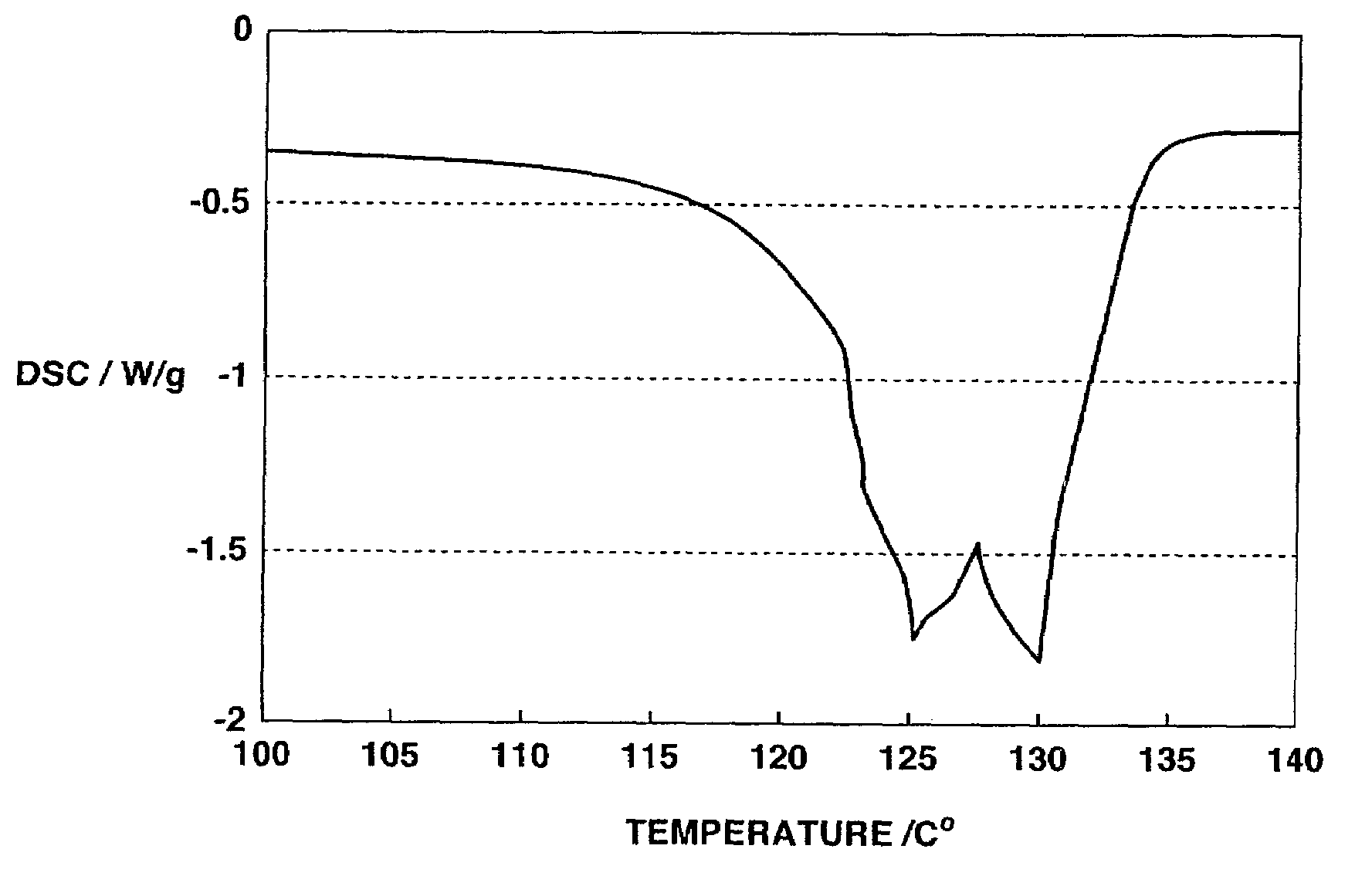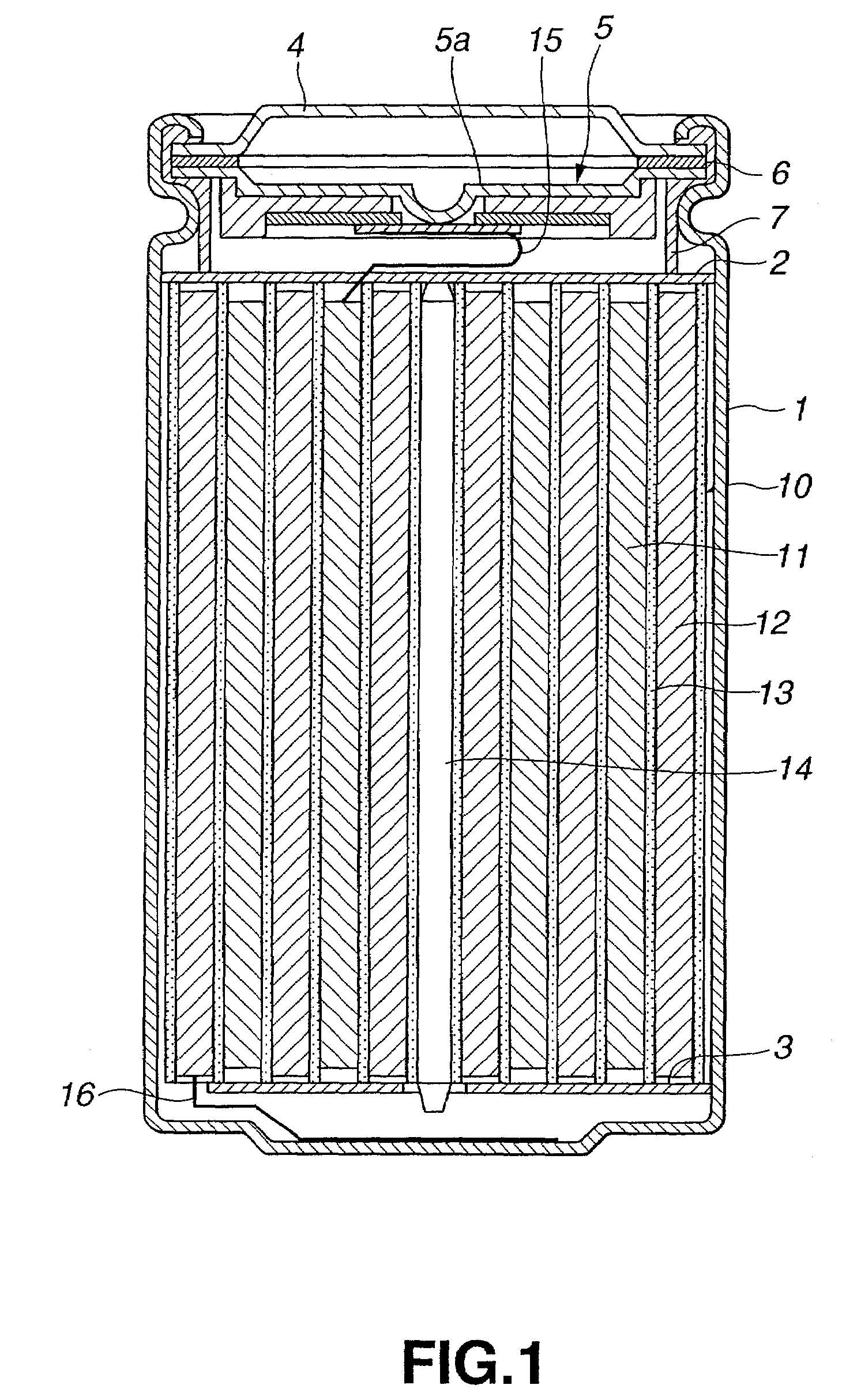Non-aqueous electrolyte secondary cell
a secondary cell, non-aqueous electrolyte technology, applied in secondary cell servicing/maintenance, cell components, cell component details, etc., can solve the problem of not giving enough, certain time lag until the separator pores are completely blocked, and the approach cannot be said to give enough, etc. problem, to achieve the effect of improving the low w temperature characteristics, not stopping in a short time, and superior shutdown effects
- Summary
- Abstract
- Description
- Claims
- Application Information
AI Technical Summary
Benefits of technology
Problems solved by technology
Method used
Image
Examples
Embodiment Construction
[0043]Referring to the drawings, a preferred embodiment of the present invention will be explained in detail. FIG. 1 shows a cross-sectional structure of a lithium ion secondary cell as a non-aqueous electrolyte secondary cell embodying the present invention. This non-aqueous electrolyte secondary cell is of the so-called cylindrical type, and includes a wound electrode 10 in the inside of a substantially hollow cylindrical cell can 1. The wound electrode 10 is comprised of a band-shaped cathode 11 an a band-shaped anode 12 coiled together interposing a separator 13. The cell can 1 is formed of nickel-plated iron (Fe) and has its one end and its opposite end closed and opened, respectively. Within the cell can 1 are arranged a pair of upstanding insulating plates 2, 3, at right angles to the peripheral surface of the wound electrode 10 as sandwiching the wound electrode 10 in-between.
[0044]On an open end of the cell can 1 are mounted a cell lid 4 and, inwardly of the cell lid 4, a s...
PUM
 Login to View More
Login to View More Abstract
Description
Claims
Application Information
 Login to View More
Login to View More - R&D
- Intellectual Property
- Life Sciences
- Materials
- Tech Scout
- Unparalleled Data Quality
- Higher Quality Content
- 60% Fewer Hallucinations
Browse by: Latest US Patents, China's latest patents, Technical Efficacy Thesaurus, Application Domain, Technology Topic, Popular Technical Reports.
© 2025 PatSnap. All rights reserved.Legal|Privacy policy|Modern Slavery Act Transparency Statement|Sitemap|About US| Contact US: help@patsnap.com



